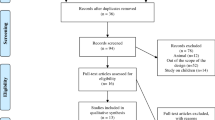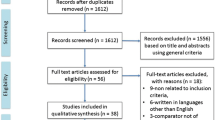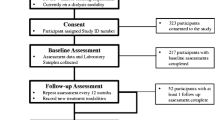Abstract
Chronic kidney disease (CKD) is becoming a serious health problem throughout the world and is one of the most potent known risk factors for cardiovascular disease. Deterioration of physical function is accelerated in patients with CKD to levels that significantly impact on clinically and patient-important outcomes such as morbidity, employment, quality of life and, ultimately, survival. However, meaningful interpretation of the existing physical function-related literature in adult patients with CKD is hindered, possibly due to inconsistent choice of methodology, assessment tools and reporting of data. The current comprehensive review of the literature aims to provide the theoretical rationale and framework for physical function assessment and to identify the prevailing approaches to (i) the characterization (classification and terminology), (ii) interpretation, and (iii) reporting of physical function assessment in people with CKD. Comprehensive assessment of physical function can provide important information about the presence of ‘physiological impairment’ at a body systems level (exercise tolerance under well controlled, laboratory-based procedures), ‘functional limitations’ (physical performance during tasks imitating usual daily, personal or occupational tasks) and ‘functional disability’ (via self-reported physical functioning in the context of a socio-cultural environment). The selection of physical function assessment tools should be guided by the primary purpose of the assessment (e.g. research or routine clinical monitoring), by the overall scientific ‘soundness’ of the chosen tool (e.g. validity, utility, reproducibility, responsiveness characteristics) and by operational factors (e.g. patient collaboration, cost, personnel expertise). Recommendations for tests, methods and protocols are therefore presented, for the assessment of cardiorespiratory and muscular fitness, physical performance and self-reported physical functioning. These recommendations are based on synthesis of available information as derived from controlled exercise training interventions in adult patients with CKD. Special considerations for physical function assessment and suggestions for future research are also addressed. Such an information synthesis might promote greater standardization of the physical function assessment of patients with CKD in routine clinical care or research settings. This would potentially lead to generation of adequate scientific decision-making criteria to help researchers and healthcare providers in selecting the most appropriate measures according to the physical function areas assessed, and to accurately and meaningfully characterize and compare patients’ responses to therapeutic interventions.






Similar content being viewed by others
References
Zhang QL, Rothenbacher D. Prevalence of chronic kidney disease in population-based studies: systematic review. BMC Public Health 2008; 8: 117
Tawney KW, Tawney PJ, Kovach J. Disablement and rehabilitation in end-stage renal disease. Semin Dial 2003; 16: 447–52
O’Hare AM, Tawney K, Bacchetti P, et al. Decreased survival among sedentary patients undergoing dialysis: resultsfrom the dialysis morbidity and mortality study wave 2. Am J Kidney Dis 2003; 41 (2): 447–54
Mapes DL, Lopes AA, Satayathum S, et al. Health related quality of life as a predictor of mortality and hospitalisation:the dialysis outcomes and practice patterns study(DOPPS). Kidney Int 2003; 64: 339–49
Lowrie EG, Braun Curtin R, LePain N, et al. Medical outcomes study Short Form-36: a consistent and powerfulpredictor of morbidity and mortality in dialysis patients. Am J Kidney Dis 2003 Jun; 41 (6): 1286–92
Knight EL, Ofsthun N, Temg M, et al. The association between mental health, physical function and hemodialysismortality. Kidney Int 2003; 63: 1843–51
Sietsema KE, Amato A, Adler SG, et al. Exercise capacity as a predictor of survival among ambulatory patients withend-stage renal disease. Kidney Int 2004; 65 (2): 719–24
Stack AG, Molony DA, Rives T, et al. Association of physical activity with mortality in the US dialysis population. Am J Kidney Dis 2005 Apr; 45 (4): 690–701
Stenvinkel P, Barany P, Chung SH, et al. A comparative analysis of nutritional parameters as predictors of outcomein male and female ESRD patients. Nephrol Dial Transplant 2002; 17 (7): 1266–74
Odden MC, Whooley MA, Shlipak MG. Association of chronic kidney disease and anaemia with physical capacity: theHeart and Soul Study. J Am Soc Nephrol 2004; 15: 2908–15
Fried LF, Lee JS, Shlipak M. Chronic kidney disease and functional limitation in older people: health, aging andbody composition study. J Am Geriatr Soc 2006; 54: 750–6
World Health Organization. International classification of functioning, disability and health (ICF). Geneva: WHO, 2001
Guralnik JM, Ferrucci L. Assessing the building blocks of function: utilising measure of functional limitation. Am JPrev Med 2003; 25 (3 Suppl.2): 1112–21
Johansen KL, DaSilva M, et al. Determinants of physical performance in ambulatory patients on hemodialysis. Kidney Int 2001; 60: 1586–91
Naish PF, Mercer TH, Koufaki P, et al. V̇O2 peak underestimatesphysical dysfunction in elderly dialysis patients[abstract]. Med Sci Sports Exerc 2000; 32 (5): S160
Painter P, Carlson L, Carey S, et al. Physical functioning and health related quality of life changes with exercise training inhaemodialysis patients. Am J Kidney Dis 2000; 35 (3): 482–92
Lohr KN, Aaronson NK, Alonso J, et al. Evaluating quality of-life and health status instruments: development ofscientific review criteria. Clin Ther 1996; 18 (5): 979–92
Perera S, Mody SH, Woodman RC, et al. Meaningful change and responsiveness in common physical performance measuresin older adults. J Am Geriatr Soc 2006; 54: 743–9
Shlipak MG, Fried LF, Cushman M, et al. Cardiovascular mortality risk in chronic kidney disease: comparison of traditionaland novel risk factors. JAMA 2005 Apr; 239 (14): 1737–45
Chen JLT, Lerner D, Ruthazer R, et al. Association of physical activity and mortality in chronic kidney disease. J Nephrol 2008; 21: 243–52
World Health Organisation. Steps to health: a European framework to promote physical activity for health, 2007 [online]. Available from URL: http://www.euro.who.int [Accessed2010 Oct 12]
Desmeules S, Levesque R, Jaussent I, et al. Creatinine index and lean body mass are excellent predictors of long termsurvival in haemodiafiltration patients. Nephrol Dial Transplant 2004; 19: 1182–9
Johansen KL, Kaysen GA, Young BS, et al. Longitudinal study of nutritional status, body composition and physical functionin hemodialysis patients. Am J Clin Nutr 2003; 77: 842–6
Fahal IH, Bell GM, Bone JM, et al. Physiological abnormalities of skeletal muscle in dialysis patients. Nephrol Dial Transplant 1997; 12: 119–27
Heimbürger O, Qureshi AR, Blaner WS, et al. Hand-grip muscle strength, lean body mass, and plasma proteins asmarkers of nutritional status in patients with chronic renalfailure close to start of dialysis therapy. Am J Kidney Dis 2000; 36 (6): 1213–25
Brodin E, Ljumgman S, Sunnerhagen SK. Rising from a chair: a simple screening test for physical function in predialysispatients. Scand J Urol Nephrol 2008; 42 (3): 293–300
Mercer TH, Koufaki P, Naish PF. Nutritional status, functional capacity and exercise rehabilitation in end stagerenal disease. Clin Nephrol 2004; 61 Suppl.1: S54–9
Clyne N, Ekholm J, Jogestrand T, et al. Effects of exercise training in predialytic uremic patients. Nephron 1991; 59: 84–9
Eidemak I, Haaber AB, Feldt-Rasmussen B, et al. Exercise training and the progression of chronic renal failure. Nephron 1997; 75: 36–40
Heiwe S, Tollbäck A, Clyne N. Twelve weeks of exercise training increases muscle function and walking capacity inelderly predialysis patients and healthy subjects. Nephron 2001; 88 (1): 48–56
Mustata S, Groeneveld S, Groeneveld S, et al. Effects of exercise training on physical impairment, arterial stiffness and healthrelated quality of life in patients with chronic kidney disease: apilot study. Int Urol Nephrol. Epub 2010 Sep 15
Castaneda C, Gordon PL, Uhlin KL, et al. Resistance training to counteract the catabolism of a low-protein dietin patients with chronic renal insufficiency: a randomized,controlled trial. Ann Intern Med 2001; 135 (11): 965–76
Leehey DJ, Moinuddin I, Bast JP, et al. Aerobic exercise in obese diabetic patients with chronic kidney disease: a randomizedand controlled pilot study. Cardiovasc Diabetol 2009; 8: 62
Ota S, Takashashi K, Suzuki H, et al. Exercise rehabilitation for elderly patients on chronic hemodialysis. Ger Nephrol Urol 1996; 5: 157–65
Koufaki P, Mercer TH, Naish PF. Effects of exercise training on aerobic and functional capacity of end-stage renaldisease patients. Clin Physiol Funct Imaging 2002; 22: 115–24
Molsted S, Eidemak I, Sorensen HT, et al. Five months of physical exercise in hemodialysis patients: effects onaerobic capacity, physical function and self rated health. Nephron Clin Practice 2004; 96: c76–81
van Vilsteren MC, Huisman RM. The effects of a low-to-moderate intensity preconditioning exerciseprogramme linked with exercise counselling for sedentaryhaemodialysis patients in The Netherlands: results of arandomized clinical trial. Nephrol Dial Transplant 2005; 20 (1): 141–6
Sakkas GK, Hadjigeorgiou GM, Karatzaferi C, et al. Intradialytic aerobic exercise training ameliorates symptomsof restless legs syndrome and improves functional capacityin patients on hemodialysis: a pilot study. ASAIO J 2008; 54 (2): 185–90
Storer TW, Casaburi R, Sawelson S, et al. Endurance exercise training during haemodialysis improves strength,power, fatigability and physical performance in maintenancehaemodialysis patients. Nephrol Dial Transplant 2005; 20 (7): 1429–37
Petersen AC, Leikis MJ, McMahon LP, et al. Effects of endurance training on extrarenal potassium regulationand exercise performance in patients on heamodialysis. Nephrol Dial Transplant 2009; 24: 2882–8
Zabetakis PM, Gleim GW, Pasternack FL, et al. Long duration submaximal exercise conditioning in hemodialysispatients. Clin Nephrol 1982; 18 (1): 17–22
Hagberg JM, Goldberg AP, Ehsani AA, et al. Exercise training improves hypertension in hemodialysis patients. Am J Nephrol 1983; 3: 209–12
Petraki M, Kouidi E, Grekas D, et al. Effects of exercise training during hemodialysis on cardiac baroreflex sensitivity. Clin Nephrol 2008; 70 (3): 210–9
Segura-Orti E, Kouidi E, Lison JF. Effect of resistance exercise during hemodialysis on physical function and qualityof life: randomized controlled trial. Clin Nephrol 2009; 71 (5): 527–37
Goldberg AP, Geltman EM, Hagberg JM, et al. Therapeutic benefits of exercise training for hemodialysis patients. Kidney Int 1983; 16: S303–9
Kouidi E, Iacovides A, Iordanidis P, et al. Exercise renal rehabilitation program: psychological effects. Nephron 1997; 77: 152–8
Lo C, Li L, Lo WK, et al. Benefits of exercise training in patients on continuous ambulatory peritoneal dialysis. Am J Kidney Dis 1998; 32 (6): 1011–8
Deligiannis A, Kouidi E, Tassoulas E, et al. Cardiac effects of exercise rehabilitation in hemodialysis patients. IntJ Cardiol 1999; 70: 253–66
Deligiannis A, Kouidi E, Tourkantonis A. Effects of physical training on heart rate variability in patients on hemodialysis. Am J Cardiol 1999; 84: 197–202
Konstantinidou E, Koukouvou G, Kouidi E, et al. Exercise training in patients with end-stage renal disease on hemodialysis:comparison of three rehabilitation programs. J Rehabil Med 2002; 34: 40–5
Kouidi E, Grekas D, Deligiannis A, et al. Outcomes of longterm exercise training in dialysis patients: comparison of twotraining programs. Clin Nephrol 2004; 61 Suppl.1: S31–8
Ouzouni S, Kouidi E, Sioulis A, et al. Effects of intradialytic exercise training on health-related quality of life indices inhaemodialysis patients. Clin Rehabil 2009; 23 (1): 53–63
Beasley CR, Smith DA, Neale TJ. Exercise capacity in chronic renal failure patients managed by continuous ambulatoryperitoneal dialysis. Aust N Z J Med 1986; 16: 5–10
Painter PL, Nelson-Worel JN, Hill MM, et al. Effects of exercise training during hemodialysis. Nephron 1986; 43: 87–92
Painter P, Moore G, Carlson L, et al. The effects of exercise training plus normalization of hematocrit on exercise capacityand health-related quality of life. Am J Kidney Dis 2002; 39: 257–65
Poortmans JR, Hermans L, Vandervliet A, et al. Renal responses to exercise in heart and kidney transplant patients. Transplant Int 1997; 10: 323–7
van den Ham EC, Kooman JP, Schols AM, et al. The functional, metabolic, and anabolic responses to exercisetraining in renal transplant and hemodialysis patients. Transplant 2007; 83 (8): 1059–68
Painter PL, Hector L, Ray K, et al. Randomized trial of exercise training after renal transplantation. Transplant 2002; 74 (1): 42–8
Koufaki P, Naish PF, Mercer TH. Reproducibility of exercise tolerance in patients with end-stage renal disease. Arch Phys Med Rehabil 2001; 82: 1421–4
Heiwe S, Clyne N, Tollback A, et al. Effects of regular resistance training on muscle histopathology and morphometryin elderly patients with chronic kidney disease. Am JPhys Med Rehabil 2005; 84 (11): 865–74
Johansen KL, Painter PL, Sakkas GK, et al. Effects of resistance exercise training and nandrolone decanoate onbody composition and muscle function among patientswho receive hemodialysis: a randomized, controlled trial. J Am Soc Nephrol 2006; 17: 2307–14
Cheema B, Abas H, Smith B, et al. Randomized controlled trial of intradialytic resistance training to target muscle wasting in ESRD: the Progressive Exercise for Anabolism in Kidney Disease (PEAK) study. Am J Kidney Dis 2007; 50: 574–84
DePaul V, Moreland J, Eager T, et al. The effectiveness of aerobic and muscle strength training in patients receivinghemodialysis and EPO: a randomized controlled trial. Am J Kidney Dis 2002; 40: 1219–29
Headley S, Germain M, Mailloux P, et al. Resistance training improves strength and functional measures in patients withend-stage renal disease. Am J Kidney Dis 2002; 40: 355–64
Yurtkuran M, Alp A, Yurtkuran M, et al. A modified yogabased exercise program in hemodialysis patients: a randomized controlled study. Complement Ther Med 2007; 15: 164–71
Rus R, Ponikvar R, Kenda RB, et al. Effects of handgrip training and intermittent compression of upper arm veinson forearm vessels in patients with end-stage renal failure. Ther Apher Dial 2005; 9: 241–4
Hsieh RL, Lee WC, Chang CH. Maximal cardiovascular fitness and its correlates in ambulatory hemodialysispatients. Am J Kidney Dis 2006; 48: 21–7
Leaf DA, Kleinman MT, Deitrick RW. The effects of exercise on markers of lipid peroxidation in renal dialysis patients compared with control subjects. Am J Med Sci 2004; 327: 9–14
Johansen KL, Schubert T, Doyle J, et al. Muscle atrophy in patients receiving haemodialysis: effects on muscle strength, musclequality and physical function. Kidney Int 2003; 63: 291–7
Gleeson NP, Naish PF, Wilcock JE, et al. Reliability of indices of neuromuscular leg performance in end-stagerenal disease. J Rehab Med 2002; 34 (6): 273–7
Franklin BA, editor. American College of Sports Medicine: guidelines for exercise testing and prescription. 6th ed. Philadelphia (PA): Lippincott Williams & Wilkins, 2000
Studenski S, Perera A, Wallace D, et al. Physical performance measures in the clinical setting. J Am Geriatr Soc 2003; 51: 314–22
Fleg JL, Pina IL, Balady GJ, et al. Assessment of functional capacity in clinical and research applications: an advisory from the Committee on Exercise Rehabilitation and Prevention Council on Clinical Cardiology, American Heart Association. Circulation 2000; 102: 1591–7
Mercer TH, Naish PF, Gleeson NP, et al. Development of a walking test for the assessment of functional capacity innon-anemic maintenance dialysis patients. Nephrol Dial Transplant 1998; 13: 2023–6
Padilla J, Krasnoff J, DaSilva M, et al. Physical functioning in patients with chronic kidney disease. J Nephrol 2008; 21: 550–9
Fitts S, Guthrie M, Blagg C. Exercise coaching and rehabilitation counseling improve quality of life for predialysis anddialysis patients. Nephron 1999; 82: 115–21
Koh KP, Fassett RG, Sharman JE, et al. Effect of intradialytic versus home-based aerobic exercise training onphysical function and vascular parameters in hemodialysispatients: a randomized pilot study. Am J Kidney Dis 2010 Jan; 55 (1): 88–99
Mercer TH, Crawford C, Gleeson NP, et al. Low Vol. exercise rehabilitation improves functional capacity andself-reported functional status of dialysis patients. AmJ Phys Med Rehabil 2002; 81: 162–7
Chen JL, Godfrey S, Ng TT, et al. Effect of intra-dialytic, low intensity strength training on functional capacity inadult haemodialysis patients: a randomized pilot trial. Nephrol Dial Transplant 2010; 25: 1936–43
Wilmund KR, Tomayko EJ, Wu P, et al. Intradialytic exercise training reduces oxidative stress and epicardial fat:a pilot study. Nephrol Dial Transplant 2010; 25: 2695–701
ATS Statement. Guidelines for the six-minute walk test. Am J Respir Crit Care Med 2002; 166: 111–7
Oh-Park M, Fast A, Gopal S, et al. Exercise for the dialyzed: aerobic and strength training during hemodialysis. Am JPhys Med Rehabil 2002; 81 (11): 814–21
Solway S, Brooks D, Lacasse Y, et al. Qualitative systematic overview of themeasurement properties of functional walk testsused in the cardiorespiratory domain. Chest 2001; 119: 256–70
Buatois S, Mankoundia P, Gueguen R, et al. Five times sit to stand test is a predictor of recurrent falls in healthy communityliving subjects aged 65 and older. J Am Geriatr Soc 2008; 56 (8): 1575–7
Tiedemann A, Shimada H, Sherrington C, et al. The comparative ability of eight functional mobility tests for predictingfalls in community dwelling older people. Age Ageing 2008; 37: 430–5
Kouidi E. Health related quality of life in end-stage renal disease patients: the effects of renal rehabilitation. Clin Nephrol 2004; 61 Suppl.1: S60–71
Johansen KL, Painter P, Kent-Braun JA, et al. Validation of questionnaires to estimate physical activity and functioningin end stage renal disease. Kidney Int 2001; 59: 1121–7
Davidson M. A systematic review of the human activity profile. Clin Rehab 2007; 21: 151–62
Ware JE, Kosinski M, Keller SK. SF-36® physical and mental health summary scales: a user’s manual. Boston(MA): The Health Institute, 1994
Hlatky MA, Boineau RE, Higginbotham MB, et al. A brief self-administered questionnaire to determine functionalcapacity (the Duke Activity Status Index). Am J Cardiol 1989; 64 (10): 651–4
Blair SN, Haskell WL, Ho P, et al. Assessment of habitual physical activity by a seven day recall in a communitysurvey and controlled experiments. Am J Epidemiol 1985; 122 (5): 794–804
Washburn R, Smith K, Jette A, et al. The Physical Activity Scale for the Elderly (PASE): development and evaluation. J Clin Epidemiol 1993; 46: 153–62
Revicki D, Hays RD, Cella D, et al. Recommended methods for determining responsiveness and minimally importantdifferences for patient reported outcomes. J Clin Epidemiol 2008; 61: 102–9
Koufaki P, Nash PF, Mercer TH. Assessing the efficacy of exercise training in patients with chronic disease. Med Sci Sports Exerc 2002; 34: 1234–41
Acknowledgements
This review is submitted on behalf of the European Association of Rehabilitation in Chronic Kidney Disease (www.renalrehab.com). Administration council nucleus members who have commended the scope and content of the current review and contributed by providing expert opinion and revisions include, in alphabetical order: Dr N. Clyne, Dr A. Daul, Professor A. Deligiannis, Dr I. Fuhrmann, Dr R. Krause, Professor T.H. Mercer and Dr P. Naish.
No funding was used to assist in the preparation of this review. The authors have no conflicts of interest that are directly relevant to the content of this review.
Author information
Authors and Affiliations
Corresponding author
Rights and permissions
About this article
Cite this article
Koufaki, P., Kouidi, E. Current Best Evidence Recommendations on Measurement and Interpretation of Physical Function in Patients with Chronic Kidney Disease. Sports Med 40, 1055–1074 (2010). https://doi.org/10.2165/11536880-000000000-00000
Published:
Issue Date:
DOI: https://doi.org/10.2165/11536880-000000000-00000




